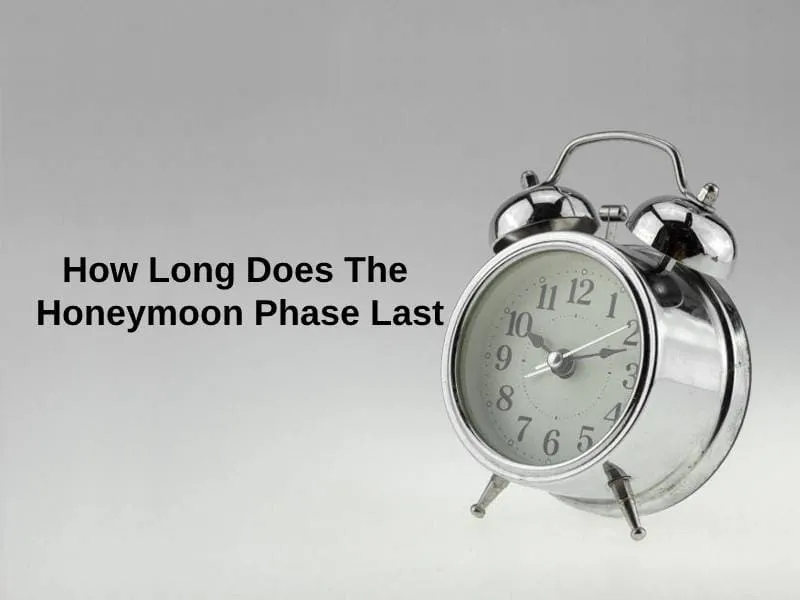What is the Honeymoon Phase
The honeymoon phase is the initial period of a romantic relationship characterized by intense feelings of love, passion, and excitement. During this time, couples often experience a heightened sense of attraction, idealization of their partner, and a desire to spend as much time together as possible. It’s a period marked by a significant release of feel-good chemicals in the brain, such as dopamine and serotonin, contributing to feelings of euphoria and infatuation. This phase is often described as a time of seeing the world through rose-colored glasses, where flaws are overlooked, and differences seem insignificant. The focus is primarily on the positive aspects of the relationship, creating a sense of closeness and bond. The duration of the honeymoon phase can vary, lasting from a few months to a couple of years, before the relationship enters a more realistic phase.
Idealization and its Role
Idealization plays a significant role in the honeymoon phase. People tend to put their partners on a pedestal, focusing on their positive qualities while overlooking or downplaying their flaws. This idealization creates a sense of perfection and enhances the intensity of the feelings. It involves projecting positive attributes onto the partner, often based on limited information or early impressions. In this stage, partners might believe they have found their ‘soulmate’ or the ‘perfect’ person. This can be both exciting and deceptive, as it doesn’t allow for a realistic understanding of the person. As time goes on, the idealization becomes unsustainable, and the reality of the partner’s imperfections and differences begins to surface. Recognizing the role of idealization is crucial to understanding why the honeymoon phase eventually ends and how to transition into a more realistic and sustainable relationship.
Unrealistic Expectations

The honeymoon phase often sets up unrealistic expectations for the relationship. These expectations can be about the level of passion, the amount of time spent together, or the ease with which conflicts are resolved. The initial period of intense excitement and constant closeness can lead to the belief that such conditions will continue indefinitely. However, as the relationship evolves, external factors, daily responsibilities, and the inherent differences between individuals begin to manifest. The belief that constant bliss and unwavering agreement are achievable becomes untenable. When these expectations are not met, it can lead to disappointment and a sense of disillusionment. Addressing these unrealistic expectations requires a shift in perspective, accepting the natural evolution of the relationship, and focusing on building a realistic and sustainable bond.
Early Days vs. Reality
The stark contrast between the early days of a relationship and the reality that follows is a key factor in the ending of the honeymoon phase. During the initial period, partners put their best foot forward, attempting to impress each other and create a favorable first impression. As time progresses, people relax and reveal their true selves, including habits, quirks, and flaws that were initially hidden or overlooked. The focus shifts from simply enjoying each other’s company to navigating the day-to-day realities of life together. This shift can reveal differences in values, lifestyle, and priorities that were less evident in the early stages. The transition from the idealized version of the relationship to the real, imperfect version can be jarring and requires a conscious effort to adapt and accept the changes.
The Illusion of Perfection
The illusion of perfection during the honeymoon phase is another reason it eventually ends. The heightened emotions and idealization can create a false sense of flawless compatibility and understanding. Partners may overlook red flags or major differences, believing that their love will overcome any obstacle. In the honeymoon phase, conflicts are often avoided or quickly resolved, giving the impression that the relationship is problem-free. This illusion crumbles as the relationship matures, and real-life challenges and disagreements inevitably arise. The realization that their partner is not perfect can be difficult to accept. To sustain a relationship, couples must embrace the imperfections, address conflicts constructively, and work to build a realistic, loving connection that goes beyond the initial illusion.
Communication Breakdown

Effective communication is essential for sustaining any relationship, and a breakdown in communication is a key reason why the honeymoon phase ends. During the early stages, partners might be hesitant to express negative feelings or concerns, fearing it will disrupt the harmonious dynamic. As the relationship matures, however, it’s crucial to openly and honestly discuss issues, needs, and expectations. When communication suffers, misunderstandings and resentment can build up, leading to conflicts and emotional distance. It’s essential to develop healthy communication patterns, including active listening, expressing needs assertively, and resolving conflicts in a constructive way. A lack of open communication can erode the trust and intimacy, causing the relationship to suffer.
Initial Excitement Fades
The intense excitement and novelty of the honeymoon phase naturally fade over time. The initial thrill of discovering a new person, the excitement of frequent dates, and the heightened passion are challenging to maintain indefinitely. Daily routines, responsibilities, and the comfort of familiarity can diminish the intensity of the initial feelings. It’s natural for the initial infatuation to wane as the couple becomes more familiar with each other and establishes a routine. The shift in focus from the excitement of the new to building a deeper connection and shared life is an essential part of the relationship’s evolution. To combat this, it’s important to actively cultivate the relationship, find new activities, and make an effort to maintain intimacy and passion even as the initial excitement fades.
Lack of Effort
A decline in effort is a common contributor to the ending of the honeymoon phase. In the beginning, partners often go to great lengths to impress and please each other, from putting in extra effort into appearance to planning exciting dates. As the relationship deepens and becomes more established, some couples might begin to take each other for granted. The focus shifts from actively pursuing each other to simply coexisting. This can manifest as a decrease in thoughtfulness, reduced acts of service, and a decline in overall effort to maintain the bond. To counter this, it’s crucial to continually make an effort, show appreciation, and prioritize the relationship. Small gestures and consistent efforts can help maintain the connection and reignite the spark.
Changing Priorities

Changing priorities can also lead to the end of the honeymoon phase. As individuals grow and evolve, their needs, goals, and priorities may shift. External factors such as career changes, family responsibilities, or personal growth can influence their relationship dynamics. These shifts can create imbalances and lead to conflicts if the partners’ priorities are no longer aligned. It is essential to recognize and respect each other’s individual growth and adapt to the changing circumstances. This might involve revisiting shared goals, finding new ways to support each other’s aspirations, and maintaining open communication. Failing to adapt to changing priorities can strain the relationship and contribute to the end of the honeymoon phase.
Increased Responsibilities
The honeymoon phase often occurs before couples take on significant life responsibilities. As life progresses, the couple’s lives can change because of responsibilities such as work, children, and financial burdens. These challenges can add stress, and they consume time and energy, reducing the quality of time spent together. These responsibilities can impact the couple’s ability to connect and to prioritize their relationship. Effectively managing these challenges requires a strong partnership, clear communication, and a willingness to support each other. The honeymoon phase is not designed to last, and the shift to shared responsibilities is a significant cause of the phase’s end.
Life’s Other Demands
The honeymoon phase occurs in a bubble, often before the pressures of daily life. Life’s demands – work, finances, health, and family issues – are inevitable and can test the relationship’s foundation. These external factors can add stress and strain on a couple, diverting time and energy away from each other. The initial infatuation of the honeymoon phase may struggle to withstand the pressure of the everyday struggles. Managing these demands requires a strong foundation of communication, mutual support, and realistic expectations. While the honeymoon phase may end, the couple can establish a deeper bond by navigating the difficulties of life together. The true test of a relationship is how couples manage their daily problems.
How to Maintain Intimacy After the Honeymoon Phase

Maintaining intimacy is crucial for a relationship’s long-term success. After the honeymoon phase ends, it is important to work to deepen the bond and sustain the connection. Intimacy goes beyond the initial physical attraction, involving emotional closeness, shared experiences, and mutual support. It requires conscious effort to maintain. Prioritizing quality time, practicing open communication, and showing appreciation are all essential elements. Engaging in new activities, pursuing shared interests, and making time for romance and affection can reignite the spark. Seeking professional help or relationship counseling can also be valuable for guidance and support in strengthening intimacy.
Importance of Open Communication
Open and honest communication is the cornerstone of a healthy relationship, especially after the honeymoon phase. Partners should be able to express their thoughts, feelings, and needs without fear of judgment or criticism. This involves actively listening to each other, showing empathy, and being willing to discuss challenging topics constructively. Good communication involves not only expressing oneself clearly but also understanding and validating the other person’s perspective. Regularly checking in with each other, addressing concerns promptly, and being honest about expectations is crucial for avoiding misunderstandings and building trust. Open communication creates a safe space for vulnerability and fosters emotional intimacy.
Strategies for Maintaining the Spark
To maintain the spark in a relationship beyond the honeymoon phase, partners must actively engage in activities that nurture the bond. Regular date nights, whether at home or out, help keep the romance alive. Trying new experiences together, such as traveling or pursuing hobbies, can create shared memories and excitement. Practicing small gestures of affection, such as sending loving messages or giving thoughtful gifts, can express appreciation and keep the spark alive. Prioritizing physical intimacy and maintaining emotional connection are important aspects of sustaining the initial feelings of attraction. These strategies keep the relationship vibrant and make it stronger through time.
Rekindling Romance

Rekindling romance is about intentionally re-establishing the passion and excitement. This involves bringing back the elements that were present at the beginning of the relationship, such as spending quality time together and showing affection. Planning surprise dates, writing love notes, and engaging in activities that bring joy and connection can help reignite the romantic fire. It also means being open to trying new things and being adventurous together. Regular communication and making efforts to express love and appreciation help partners remember the feelings and intimacy of the honeymoon phase. Rekindling romance is not about recreating the past, but cultivating a renewed sense of connection, desire, and passion.
